Medusahead
Information
Taeniatherum caput-medusae - Poaceae Family
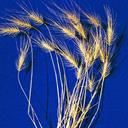
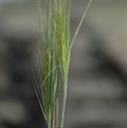
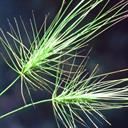
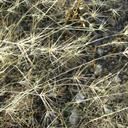
Identification
- Flowers: Flowers are long awned and barbed at the end. Over time they become twisted and are reminiscent of the snake-haired Medusa of Greek mythology.
- Seeds: Often confused with foxtail barley, Medusahead seed heads do not break apart as the seed matures.
- Leaves: Stems are wiry with a few short leaves that are somewhat rolled.
- Flowering Time: Germinates in the fall and, lives dormant over the winter, and sets seed in the spring.
- Life cycle: A winter annual ranging from 6-24 inches in size. Medusahead prefers clay soil, because of its ability to hold moisture late in the season when fall germination takes place.
Impacts
- Invades grasslands and rangelands, and can reduce the carrying capacity for domestic livestock up to 75%.
- The barbs can puncture grazing animals and are easily transported because of their ability to cling to the feet and fur of humans and animals.
- It is extremely competitive and can form dense stands as thick as 100 plants per square foot, transforming entire ecosystems.
Control
Most effective control methods
- No one method will eradicate Medusahead, and it is very important to incorporate revegetation into long term management plans.
- For larger infestations, disking or plowing, chemical applications, and burning has proven to be the most effective combination of methods.
- Because of its life cycle, control measures are most effective when implemented in both the fall as a preemergence, and the following early spring as a post emergence.
- Herbicide applications including Plateau, Roundup and Landmark applied in the fall preemergence or very early post emergence in the spring can provide control greater than 90%.
Large Images
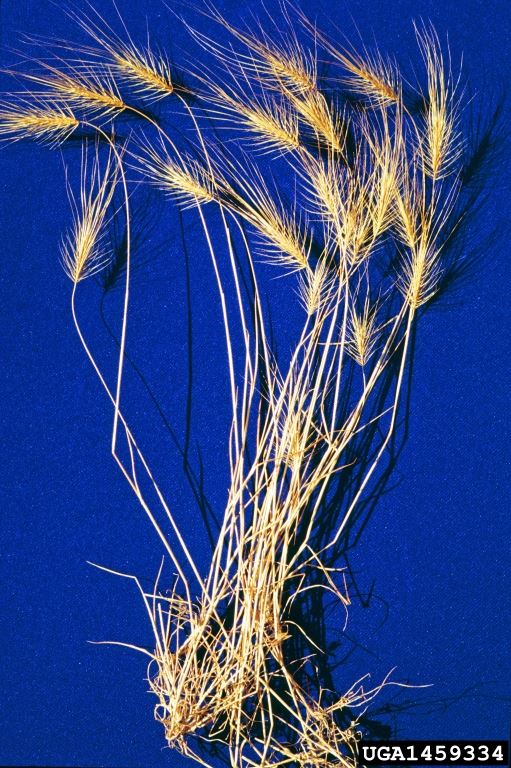
Medusahead
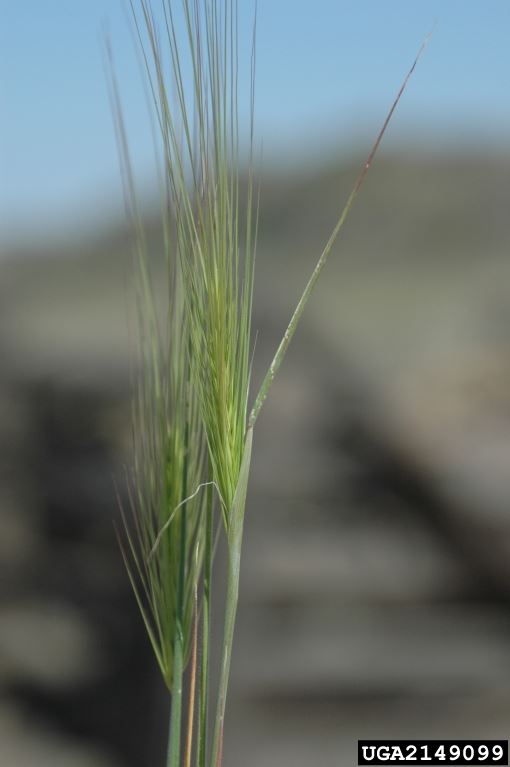
Medusahead: flowers
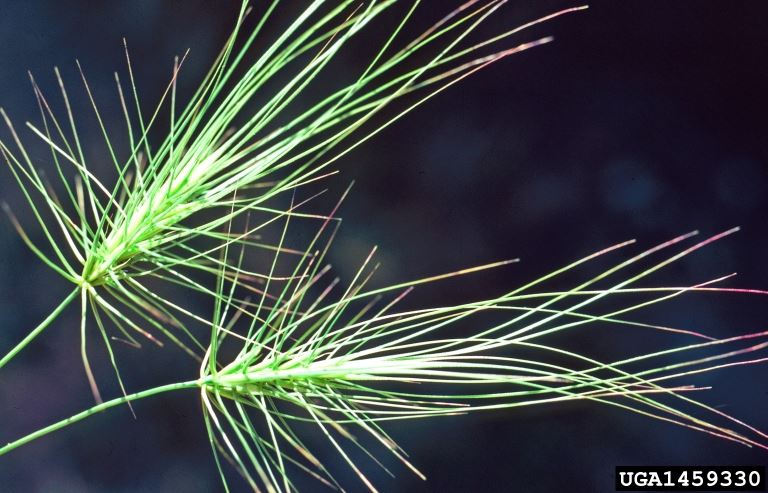
Medusahead: flowers
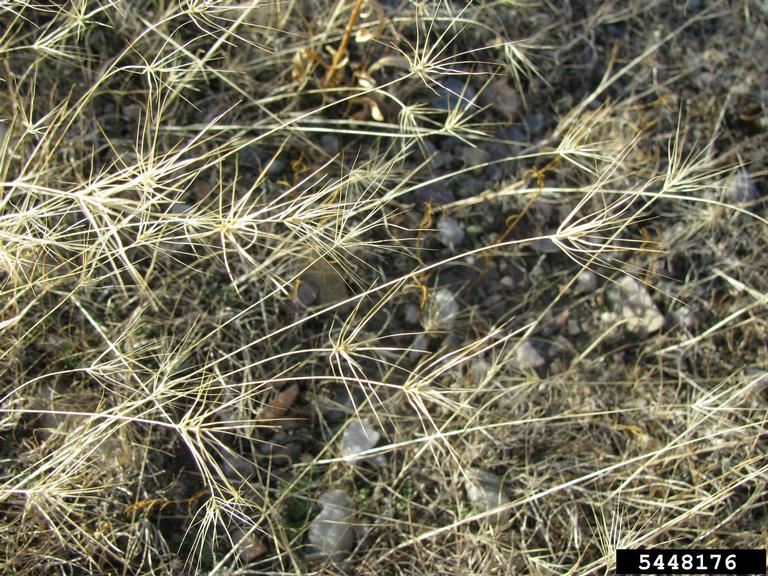
Medusahead: fruits
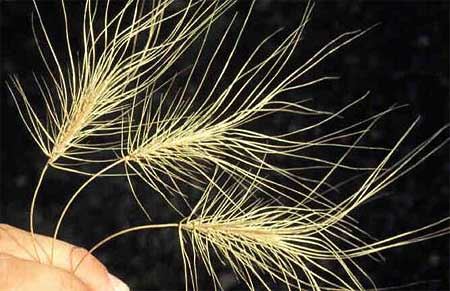
Medusahead: fruits
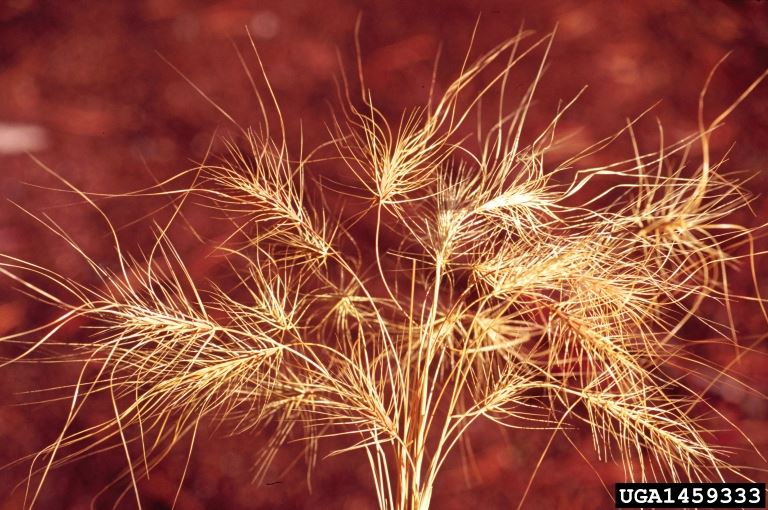
Medusahead
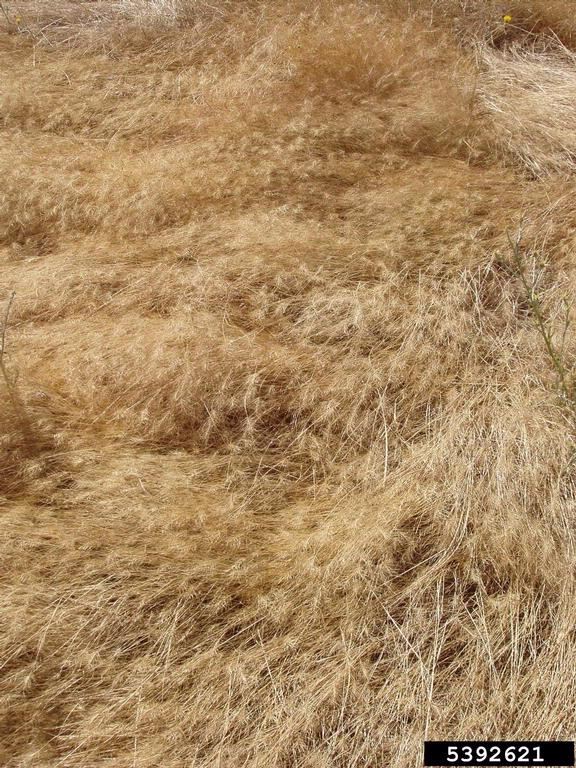
Medusahead: infestation
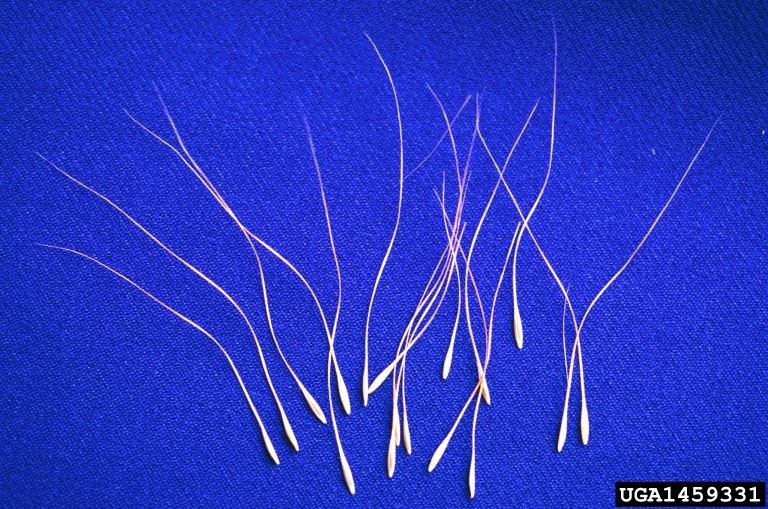
Medusahead: seeds
Resources
-
References
Davies, K., Nafus, A., & Johnson, D. Interim medusahead management guide for the intermountain west [PDF file]. Retrieved from http://oregonstate.edu/dept/eoarc/sites/default/files/abouthome/scientists/documents/691.pdf
DiTomaso, J.M., G.B. Kyser et al. (2013). Weed Control in Natural Areas in the Western United States [PDF file]. Weed Research and Information Center, University of California. Retrieved from https://wric.ucdavis.edu/information/natural-areas/wr_T/Taeniatherum.pdf View PDF
Kyser, G., DiTomaso, J., Davies, K., Davy, J., & Smith, B. (2014). Medusahead Management Guide for the Western States [PDF file]. Retrieved from http://wric.ucdavis.edu/publications/MedusaheadManagementGuide_pub_2014.pdf View PDF
M.E. Stannard, D.O. Ogle, & L. St. John. (2010). Plant guide for medusahead (Taeniatherum caput-medusae) [PDF file]. Retrieved from https://plants.usda.gov/plantguide/pdf/pg_taca8.pdf View PDF
Washington State Noxious Weed Control Board. Medusahead. Retrieved from https://www.nwcb.wa.gov/weeds/medusahead
Washington State University. (2009). Medusahead. Retrieved from https://extension.wsu.edu/whitman/2013/11/medusahead/




